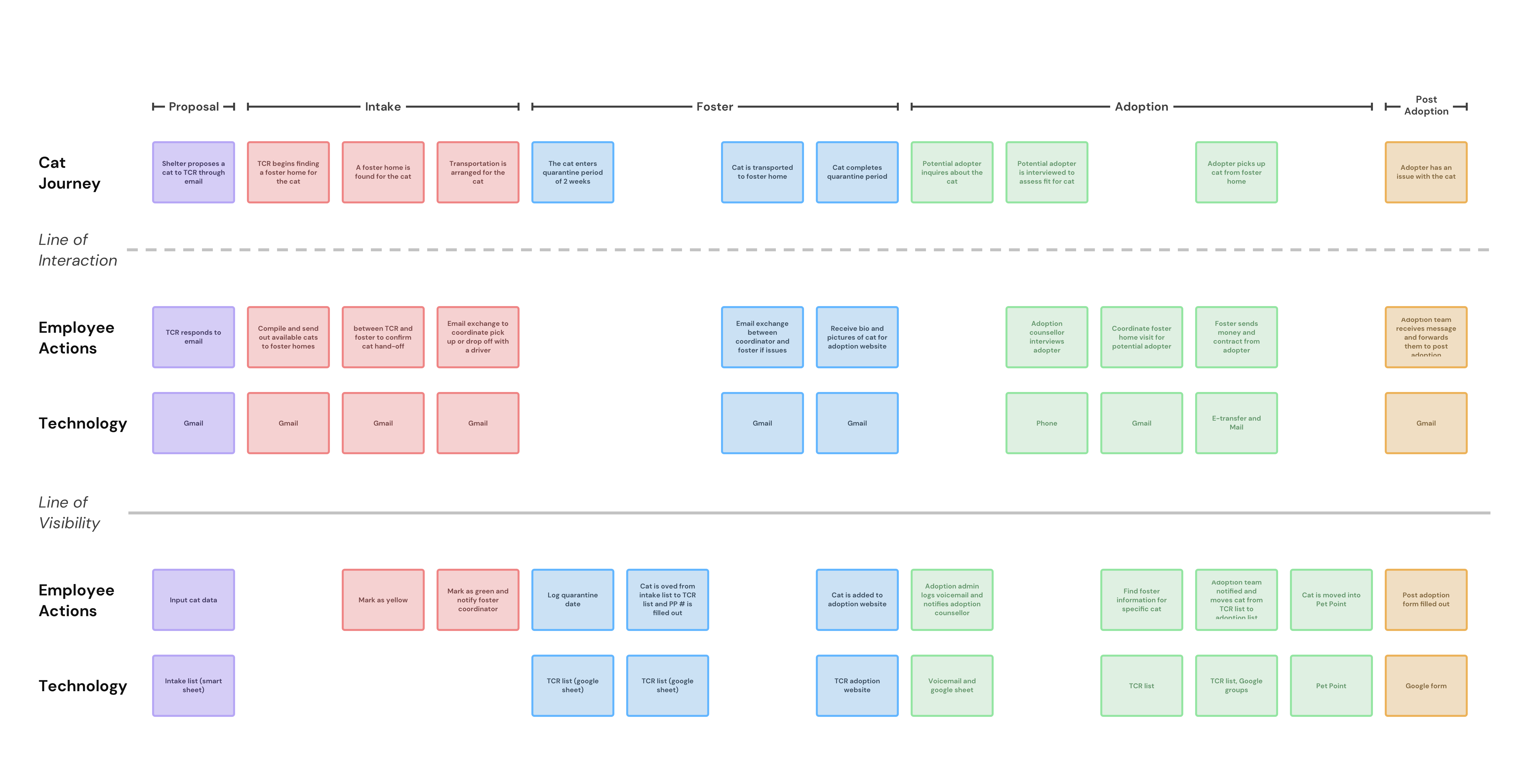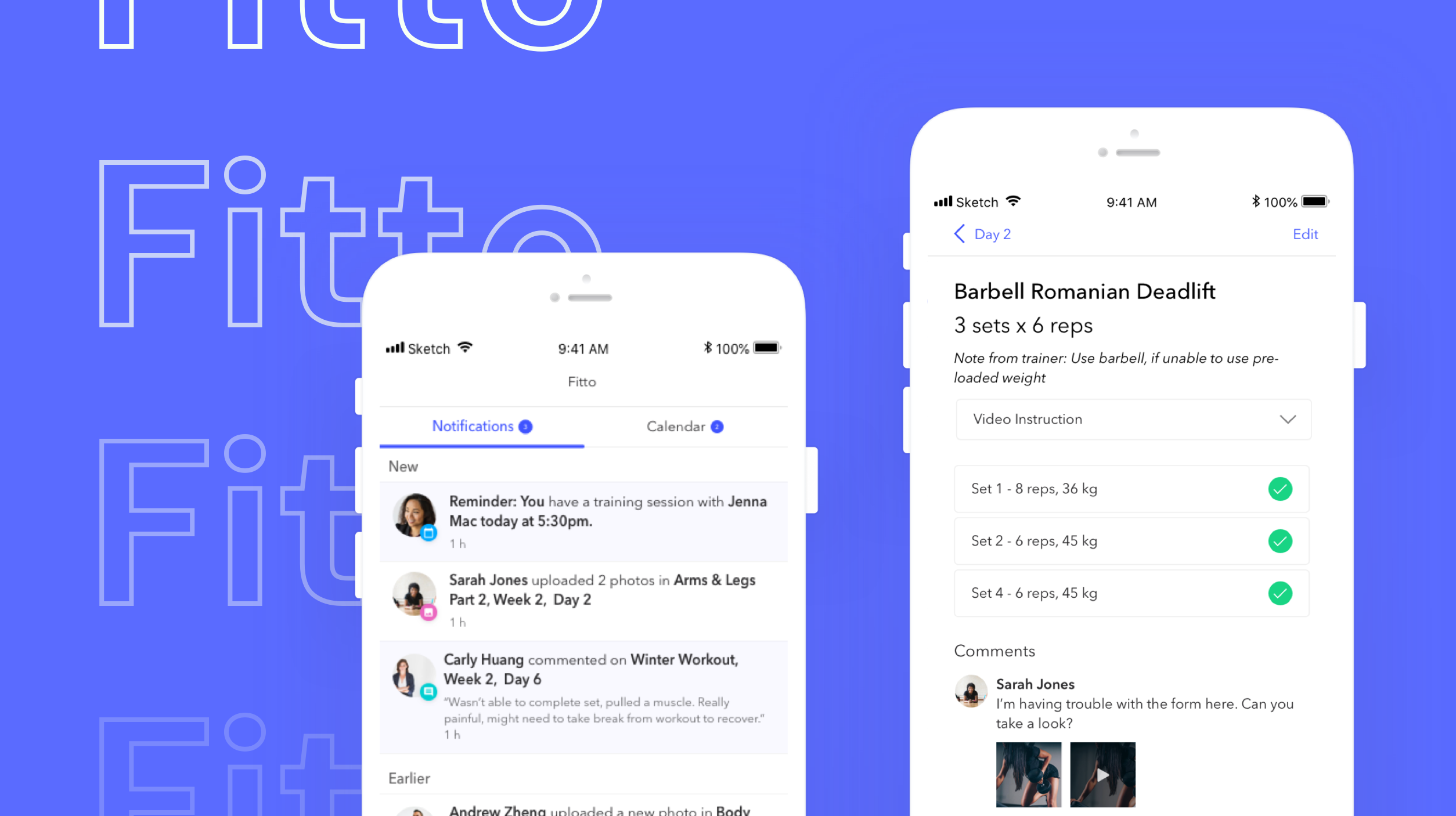
Project Overview
Toronto Cat Rescue is a non-profit organization that finds homes for cats in need. I’m currently working with them to design a new system to help make this large scale operation easier.
Tools
Figma
Tags
Service Design, User Research, Wireframing
Timeline
2 months
INTRODUCTION AND CONTEXT
About Toronto Cat Rescue (TCR)
This large-scale Toronto based non-profit finds homes for ~2700 cats per year with the help of ~1100 volunteers. They have a network of 400+ foster homes that act as temporary housing for the cats until they can find permanent care.
How I Got Involved
During my design internship at Shopify, one of my coworkers, Nataly, posted on Slack that she was looking for a designer to volunteer their time. I jumped at the chance since who doesn’t love cats 🐱💓?
Project Goal
Currently, there is no custom technology used for managing this large scale operation so the goal of this project was to design a streamlined and centralized system to easily track and manage cats.
Project KPIs
Reduce time to enter data and reduce data duplication and errors.
PEOPLE ON THE PROJECT
The Team
We are a 6 person team. My coworker from Shopify who volunteers at the shelter, Nataly, leads the infra team of 3 other student developers and is also the product manager.
For the design team, Miguel is the other designer working on the project with me.
My Role
In this project, Miguel and I have worked collaboratively together on all the different stages. We took turns leading the user interviews with the TCR volunteer leads and synthesized the information together after.
Currently, we are both working on design explorations and bouncing ideas off each other to get feedback. Then, we will decide on a few options to start user testing with the volunteers.
PROJECT CHALLENGES
Technical and Design Constraints
No API for Integration
Spreadsheets and PetPoint are used to manage and track cats. After a cat has been adopted, they’re completely moved over to PetPoint (an industry standard data management system) to get the cat microchip, apply for a pet license and archive the cat. PetPoint uses per-seat licensing, which is too expensive for ~1100 volunteers and there is no API to integrate any solution we create with this software.
Unfamiliar with Technology
Majority of the volunteers are older adults that are unfamiliar with technology, so it is important for the designs to be accessible, explicit and reduce cognitive load.
RESEARCH
User Interviews
After gathering some context from Nataly, Miguel and I had a lot of questions about how the whole process worked. We interviewed each of the volunteer leads and the TCR Vice President.
We held 7 one hour long interviews where we asked people to walk us through their job and to verbalize their frustrations aloud.
SYNTHESIS
About the Process
We discovered that this entire large scale operation was managed through spreadsheets and email. PetPoint, an enterprise software was used to manage the data as well, but mainly used for archiving adopted cats, ordering microchip identifiers and applying for pet licenses.
There were pain points at every stage.

Visualizing Relationships Between Stages
It was obvious that there would be pain points at every stage but after the interviews, it was clear there were pain points in between the stages too.
We learned that every stage had a couple volunteer leads, and they had developed their own processes that suited their own team.
This meant that no one knew about what happened outside their team, and how their actions could affect other teams.
Since I learned about service design at my internship at Shopify, I led the creation of a service design blueprint to help our team and the volunteers visualize the relationships between each stage.

We shared this blueprint to our team and the TCR organization so everyone could have a better understanding of the entire process.
Insights
We gathered a lot of information through the interviews and follow up discussions so I summarized the insights into 4 categories to help guide our design work.
 Manual and Error Prone
Manual and Error Prone
There is a lot of manual data entry across multiple spreadsheets.
Current State
Thousands of hours are spent every year doing data clean up and fixing errors.
Result
Around 5-10 cats are “lost” every month. One of the leads we spoke to is in charge of finding out what happened. Sometimes cats are linked to the wrong adopter or the data is entered incorrectly.
 Time Sensitivity
Time Sensitivity
Some of the cats that come into TCR are emergency cases where the cats need homes right away.
Current State
When this happens, urgency is prioritized over process and certain leads will take action to find homes for these cats right away.
Result
Sometimes, people will forget to backfill the data or notify other volunteers that the cat has already been moved to a different stage.
 Constant Hand Off
Constant Hand Off
Everyone is a volunteer so people work when they can so you may hand off work to someone else who is working a couple days later.
Current State
Volunteers try to use colours, notes and abbreviations to indicate important messages or special instructions.
Result
Not everyone will see these notes–cats might end up being matched with unsuitable homes.
 Keeping the History
Keeping the History
TCR is responsible for all cats processed through them so all records must be kept on file: documents, vaccinations, microchip identifiers.
Current State
This history is being kept in a notes column in the spreadsheet whenever there are updates.
Result
Many volunteers are editing and accessing these sheets. Often, they need to revert accidental changes.
EXPLORATIONS
Solution
Currently, Miguel and I are exploring early concepts. We plan to wireframe a few flows to user test with volunteers.
Thanks for Reading ❤️
I’m still working on this project but if you’d like to hear more about it, feel free to send me an email–I’d love to chat ☕.
My Other Projects
If you'd like to see more, check out my other projects below!

